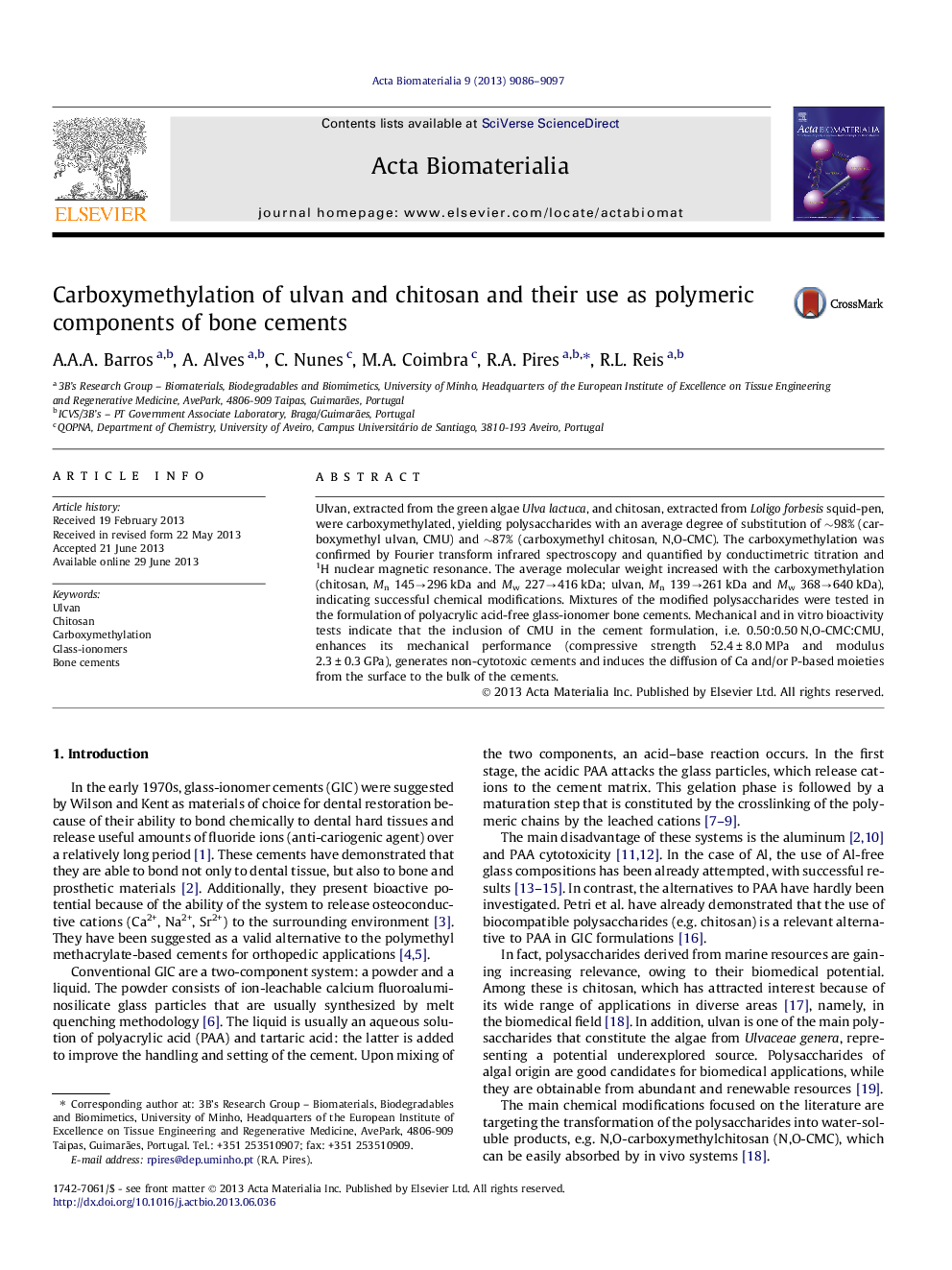| Article ID | Journal | Published Year | Pages | File Type |
|---|---|---|---|---|
| 10159498 | Acta Biomaterialia | 2013 | 12 Pages |
Abstract
Ulvan, extracted from the green algae Ulva lactuca, and chitosan, extracted from Loligo forbesis squid-pen, were carboxymethylated, yielding polysaccharides with an average degree of substitution of â¼98% (carboxymethyl ulvan, CMU) and â¼87% (carboxymethyl chitosan, N,O-CMC). The carboxymethylation was confirmed by Fourier transform infrared spectroscopy and quantified by conductimetric titration and 1H nuclear magnetic resonance. The average molecular weight increased with the carboxymethylation (chitosan, Mn 145â296 kDa and Mw 227â416 kDa; ulvan, Mn 139â261 kDa and Mw 368â640 kDa), indicating successful chemical modifications. Mixtures of the modified polysaccharides were tested in the formulation of polyacrylic acid-free glass-ionomer bone cements. Mechanical and in vitro bioactivity tests indicate that the inclusion of CMU in the cement formulation, i.e. 0.50:0.50 N,O-CMC:CMU, enhances its mechanical performance (compressive strength 52.4 ± 8.0 MPa and modulus 2.3 ± 0.3 GPa), generates non-cytotoxic cements and induces the diffusion of Ca and/or P-based moieties from the surface to the bulk of the cements.
Related Topics
Physical Sciences and Engineering
Chemical Engineering
Bioengineering
Authors
A.A.A. Barros, A. Alves, C. Nunes, M.A. Coimbra, R.A. Pires, R.L. Reis,
